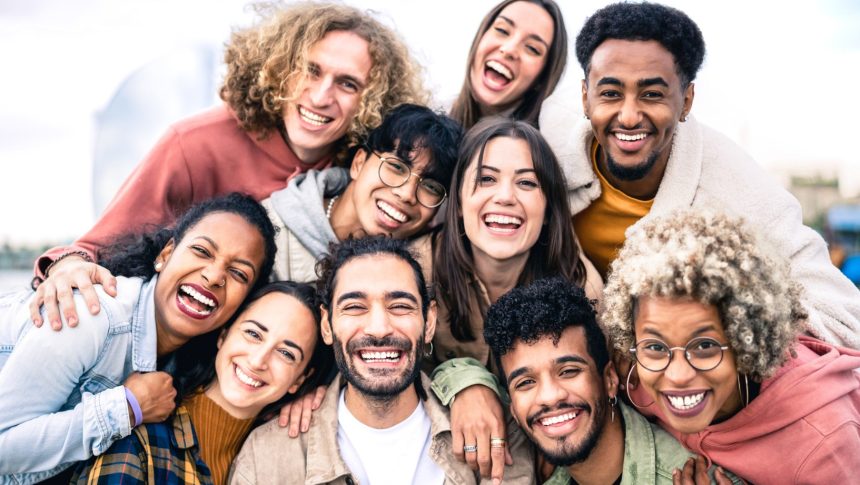Ethnicity includes traditions, beliefs, language, and history. These elements connect people to a bigger cultural story. It is different from race or nationality. Ethnicity shapes how communities view themselves and one another. Over 26 million people worldwide use genetic ancestry services to discover their roots. They seek answers about their family origins.
In this article, you’ll discover what ethnicity is. You’ll learn how DNA ancestry testing is conducted and how to make sense of the results. We’ll also discuss social and ethical issues. Finally, we’ll examine traditional genealogy methods and resources for embracing your heritage.
Defining Ethnicity: Concepts and Context
Let us start by looking at the cultural roots of ethnicity. Then, we will explore genes and algorithms.
Cultural Identity and Heritage
Cultural identity grows from shared experiences, including language, food, music, and rituals, which are passed down through generations. These experiences give a sense of belonging and inform personal values. For instance, celebrating festivals or speaking a heritage language can enhance one’s bond with a community. This connection remains strong, even if one is far from its origin.
Ethnicity vs. Race vs. Nationality
Race generally describes physical features, such as color. Ethnicity is all about learned cultural customs. Nationality describes legal citizenship or political affiliation. A person can be Yoruba ethnically, Black racially, and Canadian nationally – all at once. Recognizing this difference dispels miscommunications and allows for more precise conversation regarding identity.
The Social Construction of Ethnic Groups
Ethnic identifications change over time. Migration, trade, intermarriage, and past events recast groups and the way they define themselves. “Hispanic” began in America to bundle individuals from various Spanish-speaking backgrounds. However, each of these groups possessed a culture and a history. Such fluidity is acknowledged by not oversimplifying.
The Role of Genetics in Ethnicity
Genetic testing offers a scientific lens on ancestry. It compares your DNA to reference groups. This helps estimate where your recent ancestors likely lived.
Genetic ancestry tests analyze three main types of DNA:
- Autosomal DNA is inherited from both parents. It traces broad ancestry from the last 5 to 10 generations.
- The Y-chromosome DNA passes from father to son.
- Children receive mitochondrial DNA (mtDNA) through maternal inheritance.
Services across the field adopt distinct reference panels for their work. These are DNA databases containing present-day or historical DNA samples. Statistical models show percentages for regions such as West Africa, East Asia, and Northern Europe. These estimates show general areas of origin. However, they cannot pinpoint specific towns or tribes.
Interpreting Your DNA Results
Receiving a breakdown like “32 percent Southern European” can be exciting. Yet understanding what those numbers mean is crucial for setting realistic expectations.
Regional Ancestry vs. Population Clusters
Services vary in how they label regions. Some define clusters by political boundaries, like Italy or Spain. Others use genetic similarity, such as the Iberian cluster. Clusters group individuals who share DNA patterns, which may cross modern borders. Always read provider notes to see how they define regions and clusters.
Common Misconceptions and Limitations
- Results do not dictate your cultural identity. Your sense of belonging relies on lived experience and family traditions.
- Underrepresented populations in reference panels yield less precise estimates for those regions.
- Confidence intervals indicate uncertainty. A 20–40 percent range for a region means less data or more similarity with nearby populations.
Guidance on Selecting and Using a DNA Test Kit
If you choose to get a DNA kit, look for one that shares raw-data downloads and transparent methodologies. They apply different reference panels and algorithms. This broader comparison can refine your understanding of specific regions or minority populations.
Cultural and Social Implications
DNA discoveries can change how you view yourself and your role in society.
Impact on Personal and Group Identity
Finding unexpected ancestry can raise questions about family tales. It might also connect you to communities you never knew were out there. Some people feel empowered by embracing multiple heritages. Others feel conflicted when results challenge their family stories. Either of the responses is valid and deserves thoughtful reflection.
Ethnicity in a Globalized, Multicultural World
Modern societies are increasingly diverse. Children of mixed-heritage households often blend customs from several backgrounds. Learning about varied ancestral roots can foster empathy and cross-cultural dialogue. In workplaces and schools, acknowledging multiethnic identities supports inclusive environments.
Ethical, Privacy, and Societal Considerations
As genetic data becomes more common, it brings up tricky questions. These include consent, how we interpret the data, and how we use personal information.
Data Privacy
Researchers or law enforcement may share DNA samples and their digital profiles. Always check privacy policies. This helps you see if third parties can access your data.
Informed Consent
Clear consent processes tell users how their samples and data will be stored, shared, or sold. Seek services that require explicit opt-in for secondary uses.
Potential for Misinterpretation
Overemphasis on genetics risks reducing culture to biology. Environment and community shape ethnicity, not just inherited markers.
The ethical landscape highlights the importance of the careful use of genetic technologies. We must respect people’s rights and identities.
Exploring and Embracing Your Heritage
DNA tests are a gateway, not the final destination. Traditional research and community connections add depth and personal meaning.
Beyond Test Results: Traditional Genealogy Methods
Check local archives, churches, or civil registries for birth, marriage, and death records. Older relatives can share oral histories. These stories can reveal names, places, and anecdotes not found in official documents. Using multiple sources to build a family tree gives a fuller picture than DNA alone.
Community Resources and Further Reading
Libraries and historical societies often keep special collections. These can include passenger lists, land deeds, and newspapers. Online genealogy forums connect you with others looking for similar surnames or regions.
Ethnic cultural centers and community associations organize events. You can discover traditional crafts, recipes, and languages connected to your heritage there. These centers offer cultural insights that can support your journey in finding your ancestors and preserving their legacy.
Conclusion
Ethnicity results from cultural activities, historical connections between people, and social bonds that unite communities. Ancestry DNA tests reveal the locations where your ancestors used to reside. Tests and methods don’t have enough capability to entirely record personal life experiences leading to identity formation.
Discover your roots by blending DNA insights, family stories, traditional research, and community involvement. Begin your journey with an open mind. Honor the diverse influences—biological, cultural, and social—that create your unique heritage.














